Just about all of our products contain raw shea butter. You may be asking, what is “raw” shea butter and is it different from regular shea butter?
We use the term “raw” to indicate the shea butter is unrefined. Unrefined shea butter is minimally processed and thus contains all the nutrients of the shea kernel. Interestingly, unrefined shea butter is more expensive than refined. Unrefined shea butter can vary in color from yellow to ivory or light tan. Depending on how it is processed, unrefined shea butter has an odor which can be mild to noticeable. I have read that Shea butter from Ghana tends to have a grainy texture and shea butter from Burkina Faso has a smoother texture, and this has been the case in my experience. I have ordered raw or unrefined shea butter from Mountain Rose Herbs, Bulk Apothecary, and New Directions Aromatics. It has never been exactly the same. It really does vary in color, odor, and consistency. I’m guessing this is why many people prefer refined shea butter even though some of the nutrients are lost in the refining process.
As alluded to above, shea butter is a product of Africa – typically Ghana or Burkina Faso, Africa. Because it is women who process and profit from the production of shea butter is sometimes referred to as “women’s gold”. Women collect the fruit that falls from the Shea tree and remove the pulp keeping only the nut found inside. In videos, this nut looks similar to the pit of an avocado. The nuts are washed with water or a water-bleach solution to thoroughly clean and reduce the growth of mold or yeast. Sometimes the nuts are then boiled for less than 30 minutes so the outer shell can be easily removed. Other times, after washing, the nuts are beaten with a stick or pestles to remove the shells and then washed again. Either way, the nuts are then laid out on a clean, dry surface in the sun to dry.
Once dried, the Shea nuts are crushed with a mortar and pestle and roasted for about thirty minutes while being stirred to prevent burning. After roasting, water is added to the nuts as they are mixed and beaten and kneaded by hand into a smooth, brown, creamy paste. As more water is added, the paste clumps together and floats to the top of the water where it is scooped out and washed several times. Then the clumps are boiled to melt it into an oil so it can be purified by removing any particles. As the clumps are boiled, water from previous washings is removed via steam. The oil is poured through a fabric filter (similar to cheesecloth) to remove any sediments or remaining residue into a container to cool into a butter – shea butter! Whew! That’s a lot of work! There are some great videos on You Tube showing the process. It really is quite amazing to watch.
Obviously shea butter is used in Africa to moisturize skin and hair. It is packed with skin-loving nutrients. Some articles report it can protect against sun damage, but I would not consider it a sun screen. The best article I have read on the uses and benefits of shea butter is a blog on the New Directions Aromatics website.
Further Reading:
https://www.newdirectionsaromatics.com/blog/products/all-about-shea-butter.html
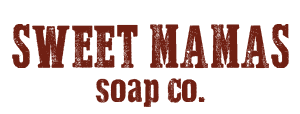
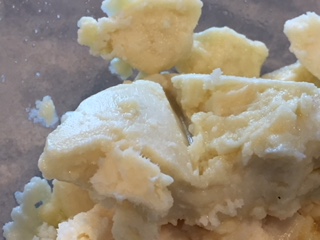
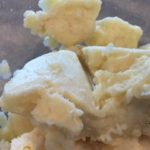
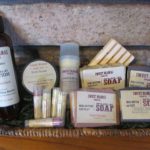
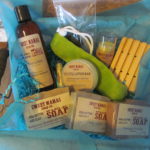
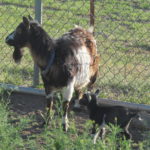
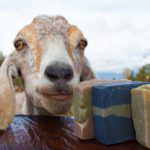
2 comments
Join the conversationMaggie - September 8, 2019
Question? If I use your shampoo bar, will I still need to use a conditioner?
Kim Tatum - September 14, 2019
I would not use a conditioner as that will coat your hair with product that may result in your hair feeling sticky. I would pour a solution of 1 part apple cider vinegar and 4 parts water over your hair. This adjusts the lowers the ph level (soap is higher in ph than hair). Then rinse with water. That is all I use.